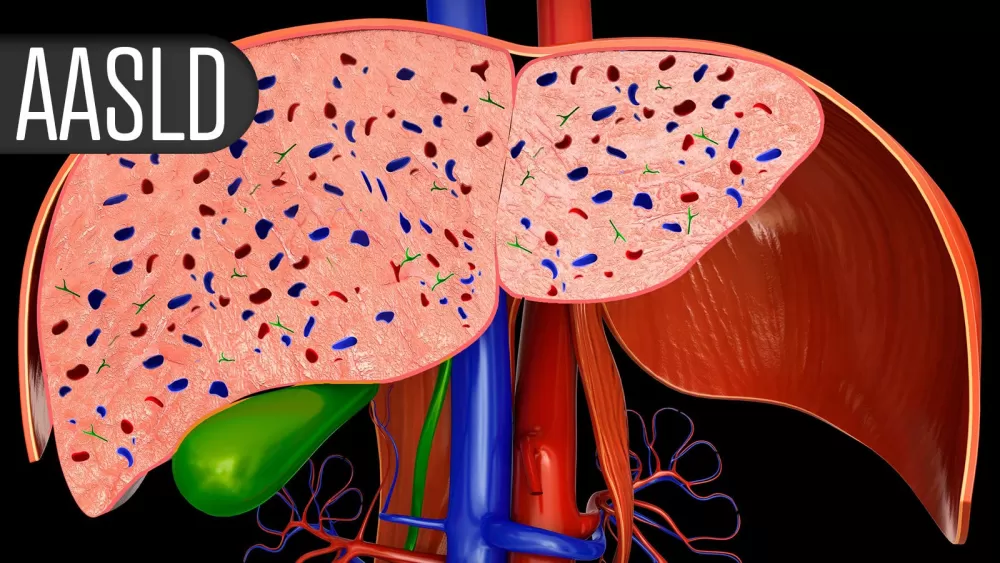Beyond the Horizon: Can Survodirsen Rewrite the Future for NASH Cirrhosis?
Share- Nishadil
- November 15, 2025
- 0 Comments
- 4 minutes read
- 18 Views

Breaking Ground: Novel Therapy Shows Promise for NASH Cirrhosis
Early results for survodirsen, a novel drug targeting advanced NASH with cirrhosis, show significant reductions in portal pressure and fibrosis markers, offering a potential new therapeutic path for a challenging liver disease.
For too long, the diagnosis of nonalcoholic steatohepatitis – NASH, for short – evolving into full-blown cirrhosis has felt like a slow, inexorable march towards an inevitable and frankly, grim, outcome. We're talking about a disease that quietly, relentlessly damages the liver, often without a whisper until it's reached an advanced, almost irreversible stage. But what if the tide could genuinely be turned? What if there was a way to intervene, to dial back the severity, even for those patients standing at the precipice of liver failure?
Well, exciting news emerged from the recent AASLD annual meeting, bringing with it a palpable sense of anticipation. Researchers unveiled promising early data on a novel agent, survodirsen – sometimes known by its less catchy moniker, IONIS-FB-LRx – which appears to do just that. It's a new kind of medicine, an antisense oligonucleotide, designed to target a specific messenger RNA (mRNA) involved in liver scarring. And in truth, the initial findings from a Phase IIa trial offer a powerful glimmer of hope for individuals living with advanced NASH and its debilitating complication: portal hypertension.
Think of it this way: when the liver becomes cirrhotic, scarred tissue starts to choke off blood flow. This blockage creates immense pressure in the veins leading to the liver, a condition doctors call portal hypertension. It’s not just a fancy term; it's the root cause of many life-threatening complications, from internal bleeding to fluid buildup, ultimately paving the way to liver failure and, tragically, the need for a transplant. Historically, our options for tackling this specific aspect of the disease, once it's taken hold, have been frustratingly limited, often reactive rather than proactive. Yet, survodirsen seems to be stepping into this void with real intent.
Presented by Dr. Arun Sanyal, a renowned expert from Virginia Commonwealth University, the trial’s primary objective was straightforward: could survodirsen significantly reduce hepatic venous pressure gradient (HVPG)? This HVPG, you see, is essentially the gold standard measurement for portal hypertension; a drop of 20% or more, or below 10 mmHg, is considered clinically meaningful – a true win, in essence. And the drug delivered, quite remarkably. Patients receiving survodirsen saw a significant, measurable reduction in their HVPG after just 24 weeks of treatment, with an average decrease of 19%.
But the story doesn't end there. Beyond the pressure relief, survodirsen also showed impressive activity against the very fibrosis that causes the problem. We’re talking about significant reductions in key markers of liver fibrosis, such as PRO-C3 and the Enhanced Liver Fibrosis (ELF) score. These aren't just lab numbers; they're indicators that the liver's scarring process itself is being slowed, perhaps even reversed. What’s more, some patients in the trial even showed histological improvements – actual reductions in their fibrosis stage and, for some, complete resolution of NASH without worsening fibrosis. Honestly, that’s quite profound for a condition considered so stubbornly progressive.
And safety? That’s always the paramount question, isn't it? For once, the news was largely positive. Survodirsen was generally well-tolerated, with most adverse events falling into the mild-to-moderate category. No new, unexpected safety signals cropped up, which is exactly what clinicians hope to see in early-phase studies. This balance of efficacy and a manageable safety profile is, frankly, critical when you’re dealing with a patient population already vulnerable to numerous health issues.
So, where does this leave us? You could say that survodirsen is emerging as a compelling candidate, offering a genuinely novel approach to advanced NASH with cirrhosis and portal hypertension. While these are early days, naturally, and larger, placebo-controlled trials will be essential to cement these findings, the current data paints a truly hopeful picture. For patients facing a dire prognosis, the prospect of a treatment that could not only alleviate the dangerous pressure in their livers but also actively work to unwind the fibrosis is, well, nothing short of revolutionary. It’s a powerful step towards rewriting the narrative of this challenging disease.
Disclaimer: This article was generated in part using artificial intelligence and may contain errors or omissions. The content is provided for informational purposes only and does not constitute professional advice. We makes no representations or warranties regarding its accuracy, completeness, or reliability. Readers are advised to verify the information independently before relying on







